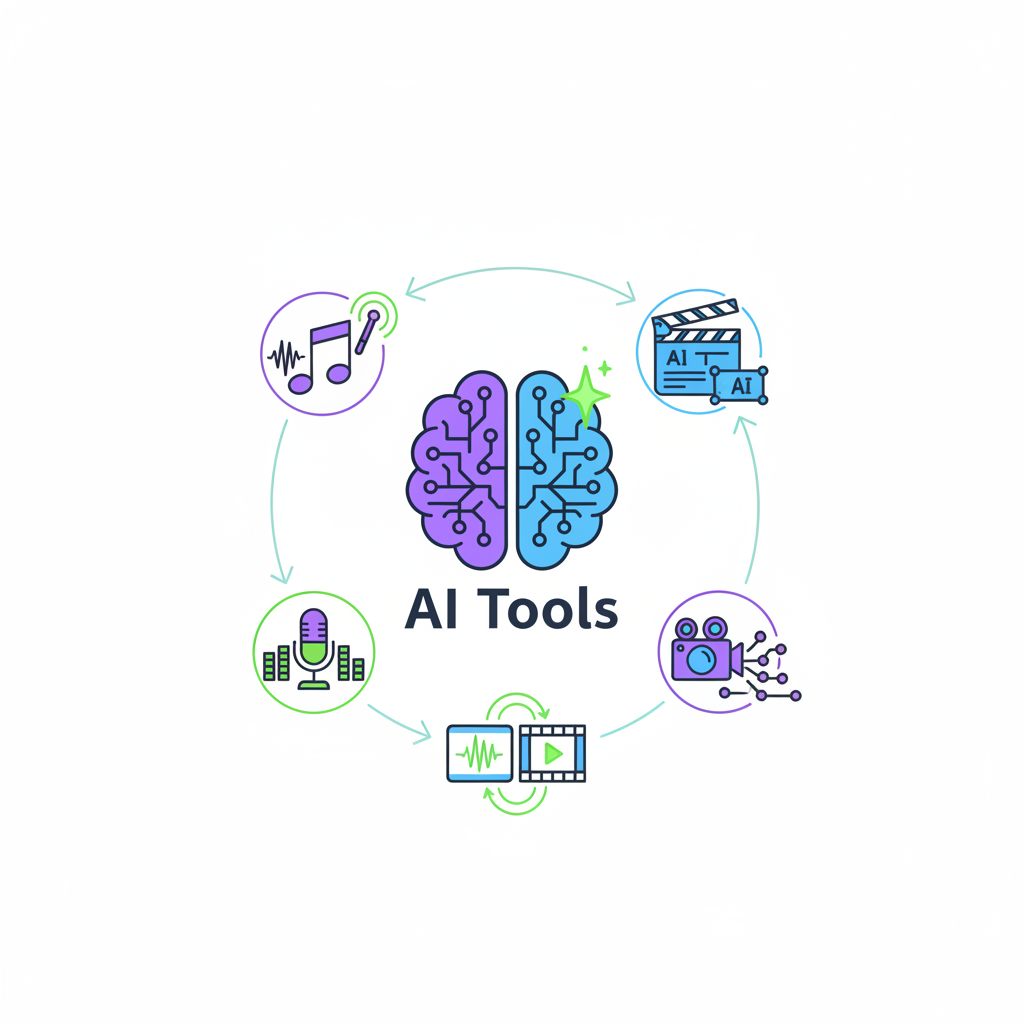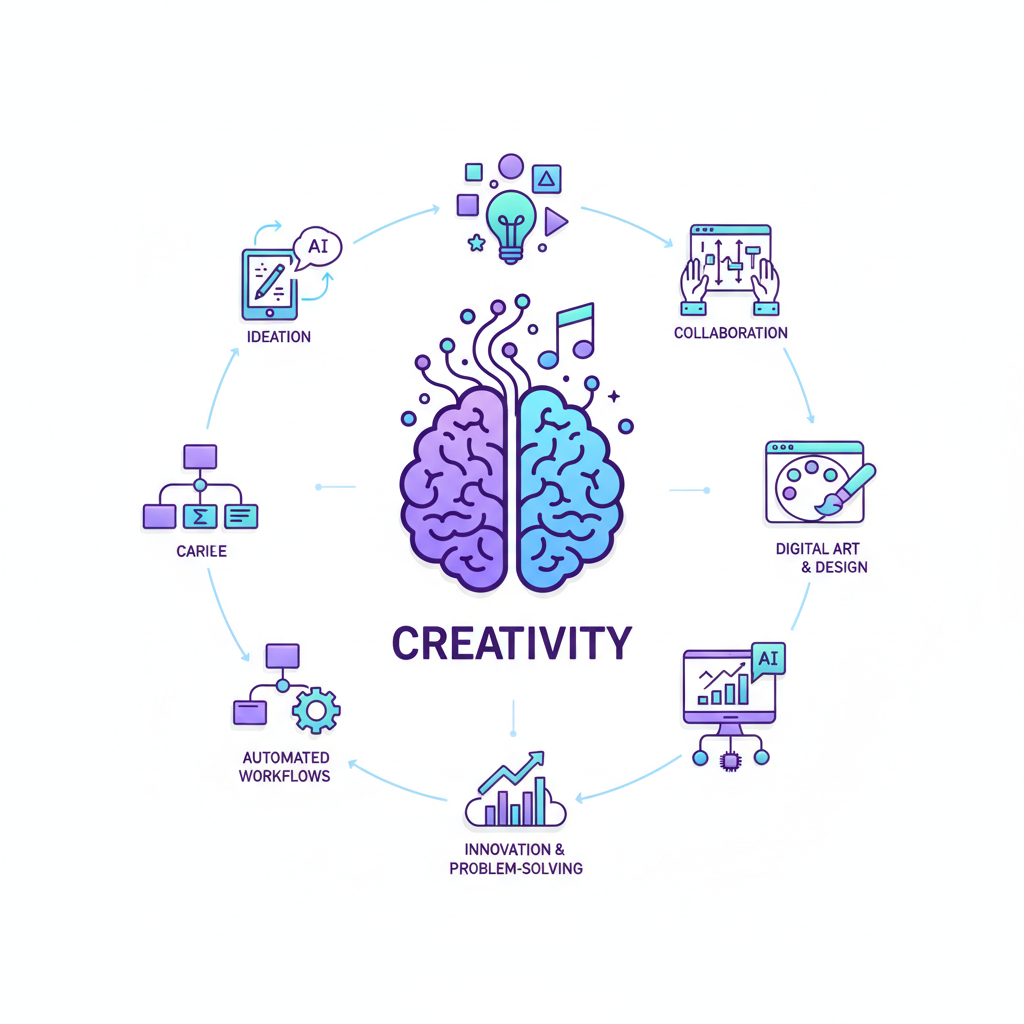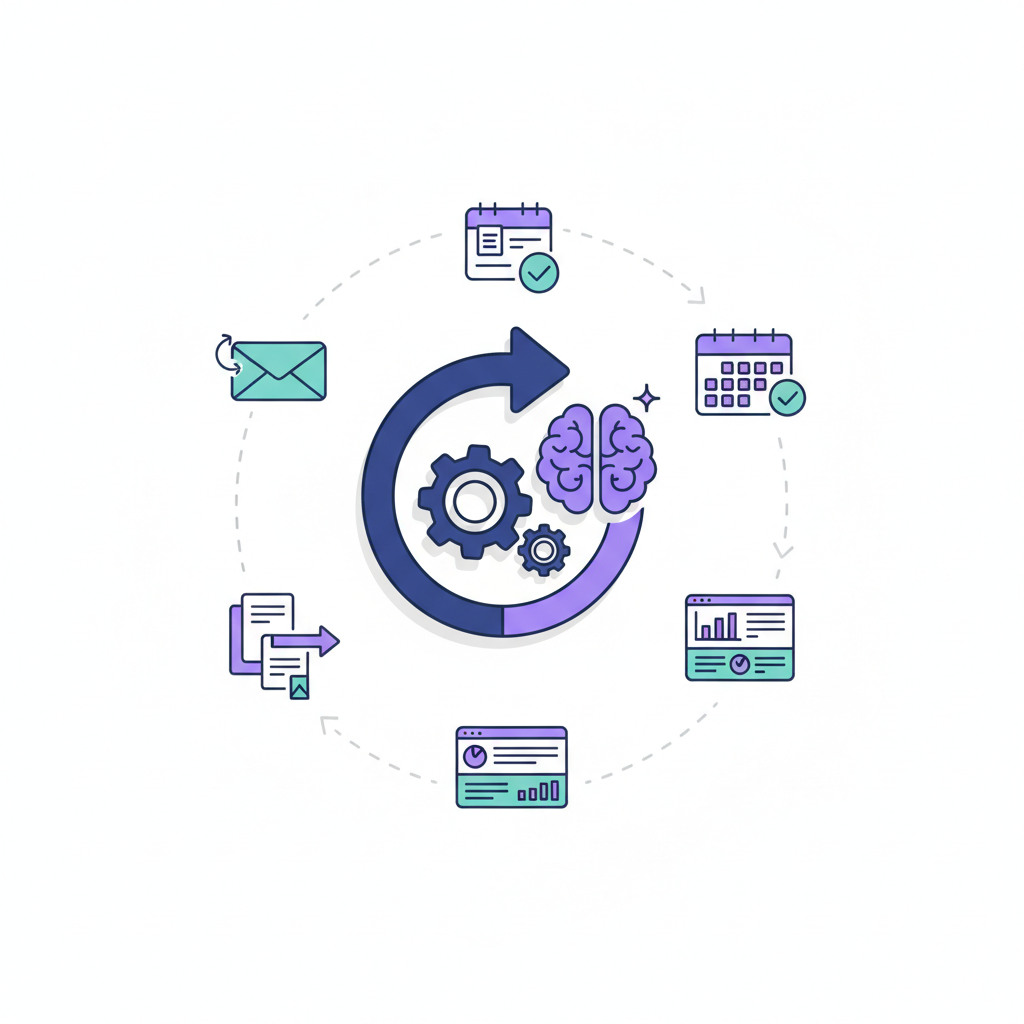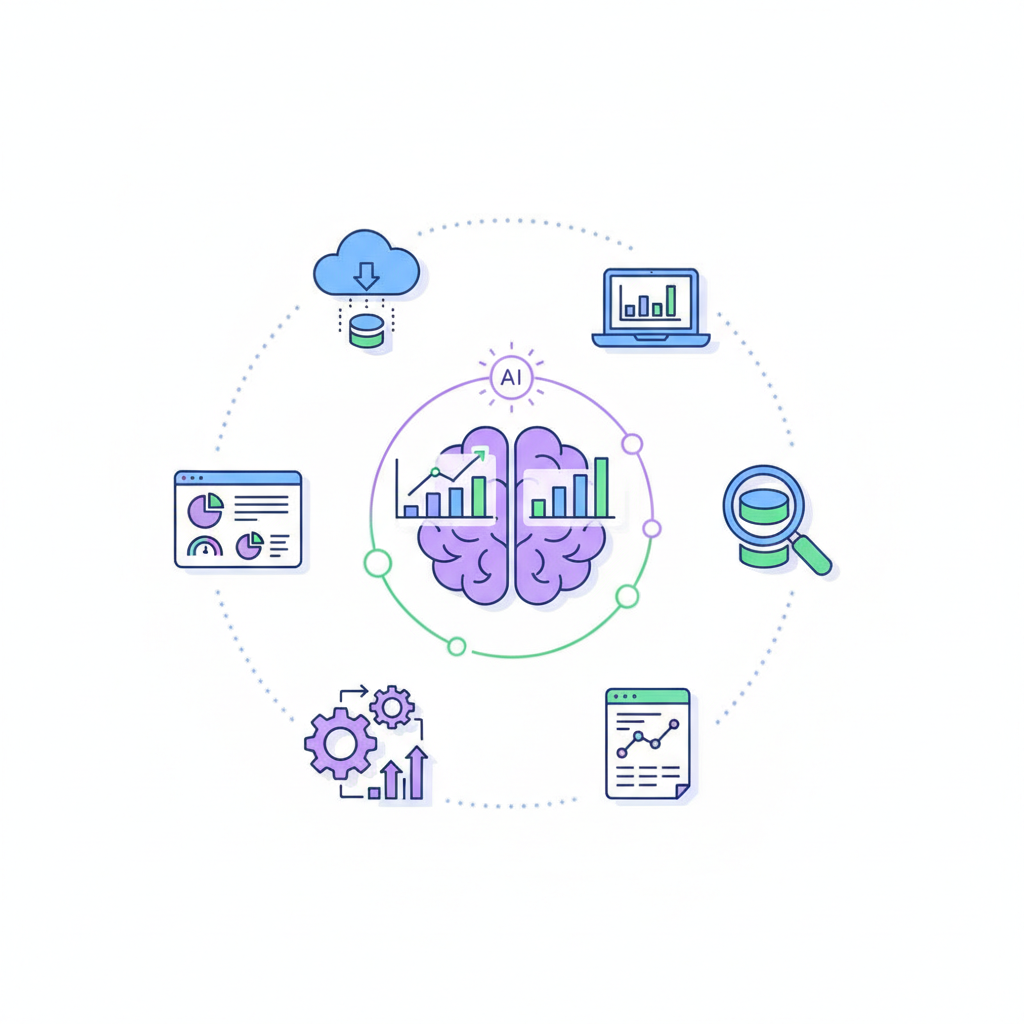AI Tools in Music and Film: Redefining How Art Is Produced
Explore the critical role of a strategic content marketing plan in driving business growth. Learn to define your audience, set clear goals, and leverage advanced tactics for success.

The landscape of creative industries is undergoing a seismic shift, driven by the relentless march of artificial intelligence. Once confined to the realm of science fiction, AI tools are now integral to the production pipelines of music and film, not merely automating tasks but fundamentally redefining how art is conceived, created, and consumed. Far from replacing human ingenuity, AI is emerging as a powerful **co-creator**, an infinitely patient assistant, and an expansive canvas upon which artists can paint their visions with unprecedented speed and scope. This technological revolution is democratizing access to sophisticated production capabilities, pushing the boundaries of what's creatively possible, and challenging our very definitions of authorship and originality.
The Symphony of Algorithms: AI in Music Production
Music, an art form deeply rooted in emotion and human expression, might seem an unlikely candidate for AI intervention. Yet, from composition to mastering, AI tools are proving to be invaluable, augmenting every stage of the musical journey.
Generative Composition and Songwriting
Perhaps the most fascinating application of AI in music is its ability to compose. Generative AI models, trained on vast datasets of existing musical pieces across genres, can now create original melodies, harmonies, rhythms, and even full orchestral arrangements.
- Amper Music, AIVA (Artificial Intelligence Virtual Artist), and Jukebox (OpenAI): These platforms exemplify the power of generative AI. Users can specify parameters like genre, mood, instrumentation, and tempo, and the AI will generate a unique piece of music in seconds. While often used for background scores in games, advertisements, or corporate videos, these tools also serve as powerful brainstorming partners for human composers, providing initial ideas or variations that might spark new creative directions.
- Melody Generation: AI can analyze melodic patterns and generate new, catchy tunes that adhere to specific stylistic rules. This can help overcome creative blocks or provide a starting point for a new song.
- Harmonic Progression: AI can suggest complex chord progressions that fit a desired mood or genre, offering alternatives that a human composer might not immediately consider.
- Rhythm and Beat Creation: From intricate drum patterns to subtle percussive elements, AI can generate rhythmic foundations that are both innovative and perfectly synchronized.
The beauty here lies not in AI replacing the human songwriter, but in providing an endless wellspring of inspiration. A human artist can take an AI-generated melody, infuse it with personal lyrics, arrange it with unique instrumentation, and imbue it with the emotional depth that only human experience can provide.
Intelligent Sound Design and Synthesis
Beyond composition, AI is transforming the very fabric of sound. Sound designers are leveraging AI to create textures, effects, and sonic landscapes that were previously unimaginable or incredibly time-consuming.
- AI-Powered Synthesizers: Tools like Google's NSynth Super or Magenta Studio explore novel sonic territories. They can learn the characteristics of various instruments and sounds, then blend them in unique ways to create entirely new timbres. Imagine a sound that has the attack of a piano, the sustain of a cello, and the decay of a human voice – AI can make this a reality.
- Automated Sound Effect Generation: For film and game developers, AI can generate realistic environmental sounds, creature noises, or futuristic sound effects based on textual descriptions or visual cues, significantly speeding up the sound design process.
- Real-time Audio Manipulation: AI algorithms can analyze live audio input and apply intelligent effects, transformations, or even generate accompanying musical elements in real-time, opening new avenues for live performance and interactive installations.
AI-Assisted Mixing and Mastering
The final stages of music production – mixing and mastering – are crucial for a polished, professional sound. AI is making these complex processes more accessible and efficient.
- Intelligent Mixing Plugins: Software like iZotope Ozone and Neutron, or LANDR, utilize AI to analyze a track and suggest optimal equalization, compression, stereo imaging, and limiting settings. They can identify problematic frequencies, balance instrument levels, and create a cohesive soundstage. While a human engineer still makes the final creative decisions, AI provides an excellent starting point and highlights areas for improvement.
- Automated Mastering Services: Platforms like LANDR and mastering.studio offer AI-driven mastering that can deliver radio-ready tracks in minutes. By analyzing thousands of professionally mastered songs, these AIs apply sophisticated processing to optimize loudness, clarity, and spectral balance, making high-quality mastering accessible to independent artists without large budgets.
- Vocal Processing: AI can be used for advanced vocal tuning, de-essing, noise reduction, and even generating harmonies, ensuring vocals sit perfectly in the mix.
Performance and Live Music
AI's influence extends to live performance, creating new forms of interaction and expression.
- AI as a Virtual Bandmate: Artists can perform alongside AI systems that improvise in real-time, responding to their musical cues and creating dynamic, evolving soundscapes.
- Interactive Installations: AI-driven systems can react to audience movement, sound, or even biometric data, generating unique musical experiences that are different every time.
- Real-time Audio Processing: AI can analyze a live performance and apply intelligent effects, correct pitch, or even generate backing tracks on the fly, enhancing the live experience for both performers and audiences.
The Cinematic Revolution: AI in Film Production
The world of cinema, with its intricate layers of visual storytelling, complex logistics, and demanding technical requirements, is also being profoundly reshaped by AI. From the initial spark of an idea to the final polished frame, AI tools are streamlining workflows, enhancing creative possibilities, and pushing the boundaries of visual effects.
Pre-production: Laying the Foundation with AI
The planning stages of filmmaking are notoriously time-consuming and resource-intensive. AI is stepping in to optimize these crucial steps.
- Scriptwriting and Story Development:
- Idea Generation: AI models can analyze vast databases of scripts and stories to suggest plot twists, character arcs, or even generate entire scene descriptions based on a few prompts. Tools like ShortlyAI or Sudowrite can help writers overcome writer's block by generating coherent text, dialogue, or narrative continuations.
- Dialogue Generation: AI can learn character voices and generate dialogue that fits their personality and the scene's context, offering writers fresh perspectives.
- Storyboarding: AI can convert text descriptions into visual storyboards, rapidly generating image sequences that help visualize the script before a single frame is shot. RunwayML, for instance, offers text-to-image capabilities that can be adapted for quick visual ideation.
- Casting: AI can analyze actor portfolios, past performances, facial expressions, and vocal tones to suggest optimal matches for specific roles, considering factors like emotional range and on-screen chemistry. This can significantly narrow down the casting pool and identify hidden talents.
- Location Scouting: AI can analyze satellite imagery, topographical data, weather patterns, and logistical factors (accessibility, permits) to suggest ideal filming locations, saving countless hours of physical scouting.
- Budgeting and Scheduling: Predictive AI algorithms can analyze historical production data to create more accurate budgets and optimize shooting schedules, identifying potential bottlenecks and suggesting efficiencies to prevent costly delays.
Production: On Set with Intelligent Assistance
Even on set, where human intuition and quick decision-making are paramount, AI is finding its place.
- Virtual Production and Set Design: AI-powered tools are central to virtual production workflows, allowing filmmakers to create realistic virtual environments in real-time. This enables actors to perform within digital sets that are rendered live, offering unprecedented flexibility and creative control, reducing the need for expensive physical sets and location shoots.
- Camera Operation and Cinematography: AI-driven drones and smart cameras can perform complex tracking shots, maintain perfect focus, and even suggest optimal framing based on scene analysis. This allows cinematographers to achieve highly sophisticated shots with greater precision and efficiency.
- Performance Enhancement and Digital Doubles: While controversial, AI can analyze actor performances and provide feedback. More advanced applications involve generating synthetic performances or creating highly realistic digital doubles for stunts, de-aging actors, or even bringing deceased actors back to the screen, as seen in films like Rogue One or The Irishman.
Post-production: The AI-Powered Editing Suite
Post-production, a phase often characterized by meticulous, repetitive tasks, is where AI truly shines, accelerating workflows and enabling new creative possibilities.
- Editing:
- Automated Rough Cuts: AI-assisted editing software (e.g., Adobe Premiere Pro's Sensei AI features) can analyze footage, detect scenes, identify key moments, and even generate initial rough cuts based on script analysis or desired pacing.
- Object Removal and Tracking: AI can automatically identify and remove unwanted objects from frames (e.g., boom mics, crew members) or precisely track objects for visual effects integration, tasks that were previously labor-intensive.
- Color Grading: AI can analyze the visual style of a film and suggest optimal color palettes, ensure consistency across scenes, and even automatically apply specific looks (e.g., vintage, cinematic).
- Visual Effects (VFX): This is arguably where AI has made the most dramatic impact.
- Deepfake Technology: Beyond its controversial uses, deepfake technology is a powerful VFX tool for de-aging actors, face swapping, or creating highly convincing digital doubles, offering filmmakers unprecedented control over character appearance.
- Generative CGI: AI can generate highly realistic CGI elements, environments, creatures, and even entire crowds with minimal human input, significantly reducing the time and cost associated with traditional 3D modeling and animation.
- Automated Rotoscoping and Masking: AI can automatically isolate subjects from backgrounds, a notoriously tedious task, making compositing and visual effects integration much faster.
- Motion Capture Enhancement: AI can refine motion capture data, smooth out imperfections, and even infer missing data points, leading to more fluid and realistic character animations.
- Sound Design and Mixing:
- Dialogue Enhancement and Noise Reduction: AI can intelligently isolate dialogue, remove background noise, and enhance clarity, even in challenging audio recordings.
- Automated Foley: AI can generate realistic foley sounds (footsteps, rustling clothes, object interactions) based on visual cues in the footage, saving countless hours in the sound studio.
- Ambient Sound Generation: AI can create immersive ambient soundscapes that perfectly match the visual environment, from bustling city streets to serene natural landscapes.
- Localization and Accessibility: AI is revolutionizing how films reach global audiences. Automated subtitling, dubbing (with AI voice synthesis that matches original actor's tone), and audio descriptions for visually impaired audiences are becoming faster and more accurate, breaking down language and accessibility barriers.
The Symbiotic Relationship: Human Creativity and AI Augmentation
It's crucial to understand that AI in music and film is not about replacing human artists but about **augmenting their capabilities**. AI serves as a powerful tool, a tireless assistant, and a boundless source of inspiration.
- Freeing Artists from Mundane Tasks: By automating repetitive and time-consuming processes (like rotoscoping, noise reduction, or initial mixing), AI allows artists to dedicate more time and energy to the core creative aspects of their work.
- Expanding the Creative Palette: AI can generate ideas, sounds, and visuals that might be beyond human intuition or traditional methods, opening up entirely new artistic expressions and genres.
- Democratizing Production: High-end production tools, once exclusive to large studios, are becoming more accessible to independent artists and filmmakers through AI-powered software, leveling the playing field and fostering a more diverse creative landscape.
- Accelerating Iteration: Artists can rapidly experiment with different ideas, compositions, or visual effects, iterating much faster than ever before, leading to more refined and innovative final products.
- AI as a Co-Creator: In many instances, AI acts as a creative partner, offering suggestions, variations, and solutions that spark new directions for the human artist, leading to a truly collaborative artistic process.
Challenges and Ethical Considerations
While the benefits are immense, the integration of AI into art production is not without its complexities and ethical dilemmas.
- Copyright and Ownership: Who owns the copyright to AI-generated music or film? If an AI is trained on copyrighted material, does its output infringe on those rights? These questions are at the forefront of legal and artistic debates.
- Job Displacement: There are legitimate concerns that AI automation could lead to job losses in certain creative and technical roles, particularly those involving repetitive tasks. The industry must adapt by focusing on roles that leverage AI rather than compete with it.
- Authenticity and Originality: As AI becomes more sophisticated, the line between human and machine creativity blurs. Does AI-generated art possess the "soul" or emotional depth of human-created work? How do we define originality when algorithms are generating content based on existing patterns?
- Bias in AI: AI models are only as unbiased as the data they are trained on. If training data reflects existing biases (e.g., gender, race, genre), the AI's output could perpetuate these biases, leading to a lack of diversity or stereotypical representations in art.
- Deepfakes and Misinformation: The ability of AI to create hyper-realistic synthetic media, particularly deepfakes, poses significant ethical challenges. While powerful for VFX, the potential for misuse in creating misinformation or non-consensual content is a serious concern that requires robust ethical guidelines and regulatory frameworks.
- Data Privacy and Security: The use of AI in production often involves processing vast amounts of data, including sensitive creative assets. Ensuring the privacy and security of this data is paramount.
The Future Landscape: A New Renaissance
The trajectory of AI in music and film points towards an exciting, if complex, future. We are likely to see:
- Increased Integration: AI tools will become seamlessly integrated into standard creative software, making their use intuitive and ubiquitous.
- Hyper-Personalized Art: AI could enable highly personalized musical experiences or even films that adapt their narrative or visuals based on individual viewer preferences.
- New Artistic Forms: The unique capabilities of AI will undoubtedly give rise to entirely new genres of music, film, and interactive art that we can barely conceive of today.
- Evolving Role of the Artist: The artist's role will shift from being solely a creator to also being a curator, a director of AI, and a visionary who can harness these powerful tools to bring their unique perspective to life. The emphasis will be on conceptualization, emotional storytelling, and the unique human touch that AI cannot replicate.
Conclusion
AI tools are not just changing how music and film are produced; they are fundamentally redefining the creative process itself. From generating melodies and scripts to automating complex visual effects and mastering audio, AI is proving to be an indispensable partner in the artistic journey. While challenges related to ethics, copyright, and job displacement must be thoughtfully addressed, the overwhelming potential of AI to augment human creativity, democratize access to sophisticated tools, and unlock unprecedented artistic possibilities heralds a new era for the creative industries. The future of music and film will be a collaborative symphony between human imagination and artificial intelligence, pushing the boundaries of art in ways we are only just beginning to comprehend. The canvas is expanding, the palette is richer, and the stories waiting to be told are more diverse and vibrant than ever before.
Featured Tools

10Web is an AI-powered WordPress platform that offers automated website building, hosting, and optimization with AI assistance for content and image generation.

A global creative platform connecting businesses with freelance designers for custom graphic design projects.

A1.art is an AI art generator that transforms text descriptions into unique digital artworks across various styles.

An AI platform offering customizable virtual AI girlfriends for companionship and interactive chat experiences.

Acquire.io is a customer engagement platform offering live chat, AI chatbots, co-browsing, and video chat to enhance customer support and sales.
Top AI Categories
Related Articles

How AI Tools Are Redefining Creativity in the Modern Workplace
AI tools are redefining creativity by acting as intelligent co-pilots in the modern workplace. Discover how generative AI (Midjourney, ChatGPT) automates ideation, accelerates content creation, refines code, and shifts the human role from 'maker' to 'strategist' and 'curator'.

Top 10 AI tools for Enterprise Workflow Automation
Enterprises are turning to AI-powered workflow automation to eliminate manual processes, cut costs, and accelerate strategic execution. Unlike traditional automation, AI can handle unstructured data and make intelligent decisions, offering profound benefits across finance, HR, and IT. This guide curates the top 10 AI tools—from RPA leaders like UiPath and Automation Anywhere to iPaaS solutions like Workato and low-code platforms like Microsoft Power Automate—providing a blueprint for building a more agile and resilient organization.

Top 10 AI tools for Business Analytics
In the data-driven world, AI is transforming business analytics from descriptive reporting to predictive strategy. These AI-powered tools leverage machine learning and NLP to automatically discover hidden patterns, forecast future outcomes, and allow non-technical users to query data in plain English. The top 10 platforms, including industry leaders like Microsoft Power BI and Tableau (with Einstein), and AI-native tools like ThoughtSpot and Akkio, democratize access to powerful insights. By adopting these solutions, businesses can turn overwhelming raw data into their most valuable strategic asset, accelerating decision-making and driving competitive advantage.